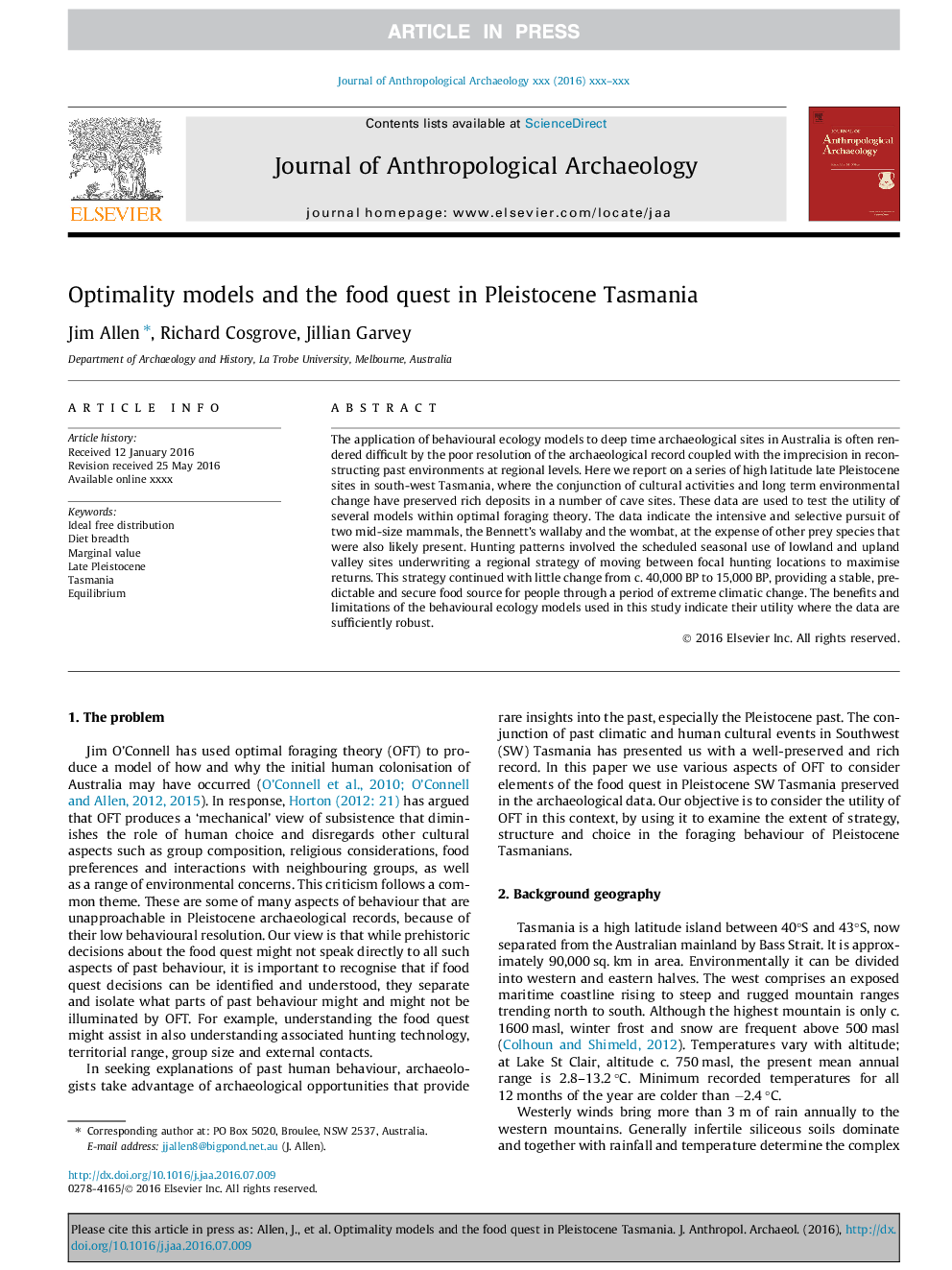| Article ID | Journal | Published Year | Pages | File Type |
|---|---|---|---|---|
| 5111938 | Journal of Anthropological Archaeology | 2016 | 10 Pages |
Abstract
The application of behavioural ecology models to deep time archaeological sites in Australia is often rendered difficult by the poor resolution of the archaeological record coupled with the imprecision in reconstructing past environments at regional levels. Here we report on a series of high latitude late Pleistocene sites in south-west Tasmania, where the conjunction of cultural activities and long term environmental change have preserved rich deposits in a number of cave sites. These data are used to test the utility of several models within optimal foraging theory. The data indicate the intensive and selective pursuit of two mid-size mammals, the Bennett's wallaby and the wombat, at the expense of other prey species that were also likely present. Hunting patterns involved the scheduled seasonal use of lowland and upland valley sites underwriting a regional strategy of moving between focal hunting locations to maximise returns. This strategy continued with little change from c. 40,000Â BP to 15,000Â BP, providing a stable, predictable and secure food source for people through a period of extreme climatic change. The benefits and limitations of the behavioural ecology models used in this study indicate their utility where the data are sufficiently robust.
Related Topics
Social Sciences and Humanities
Arts and Humanities
History
Authors
Jim Allen, Richard Cosgrove, Jillian Garvey,
